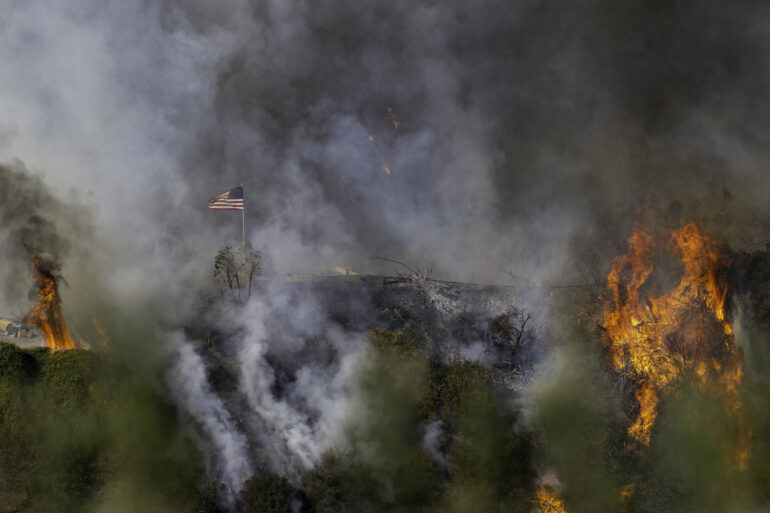With cutbacks to federal government programs and layoffs of civil servants around the country, there’s been a lot of confusion about funding for wildfire prevention and mitigation under the new presidential administration. Yet, Santa Rosa, California resident Lynn Garric feels encouraged. “I’m a very hopeful, optimistic person,” she explains. “I’m the one who came back and rebuilt after the fires here.“
In the past decade, Santa Rosa has experienced two devastating fires: the Tubbs Fire in 2017 and the Glass Fire in 2020. Combined, they burned more than 100,000 acres of land and destroyed 7,200 structures, including thousands of homes. Garric lost her home in the Tubbs fire, which also cost 22 lives.
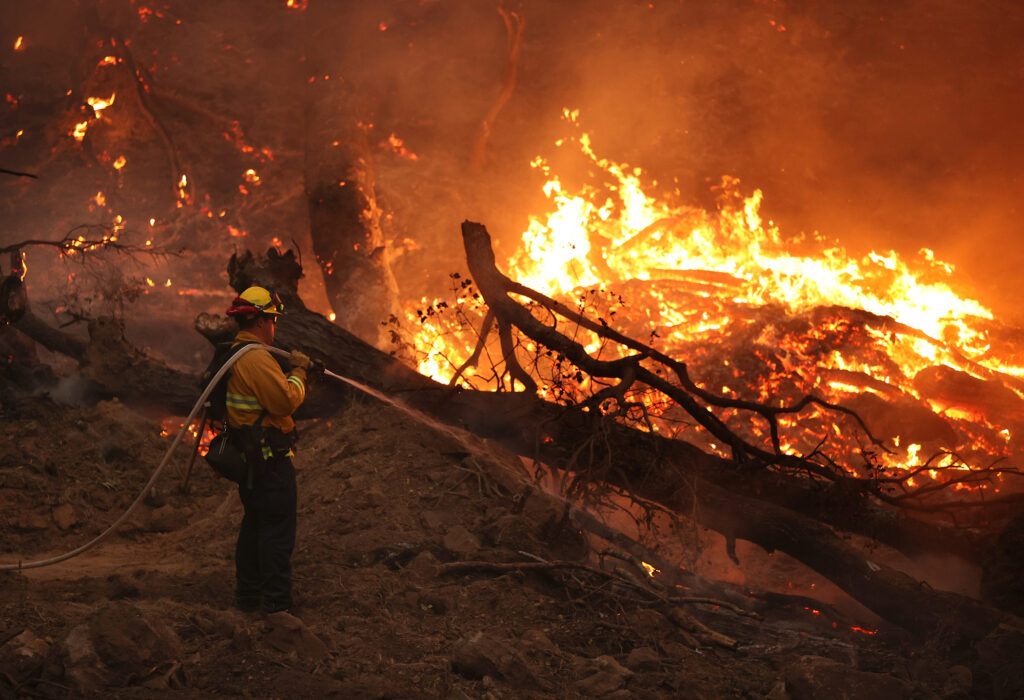
“In California, we’re acutely aware of the need to do fire prevention,” says Garric. “Because of climate change and because of the fires we’ve experienced, we know we can’t just turn our backs. This is really important work all over the country. It has to get done. I think it will get done.”
The work Garric is referring to is known as fire fuel reduction, removing overgrown vegetation that feeds wildfires, causing them to expand and threaten lives and property. In 2024, 65,897 wildfires were reported in the United States, burning almost 9 million acres of land and destroying 4,552 structures. Eleven firefighters lost their lives last year battling blazes.
Hopeful Response to a Growing Concern
Historically, fire season runs from June through November, but more than 8,000 wildfires have occurred across the U.S. already in 2025. In January, 29 people died in the Palisades and Eaton fires in Los Angeles, which caused upward of $54 billion in property damage. Warmer, drier conditions in the East and South are responsible for a surge in fires in regions not typically considered vulnerable. So far this year, there have been fires reported in Florida, Tennessee, North and South Carolina, and New York.
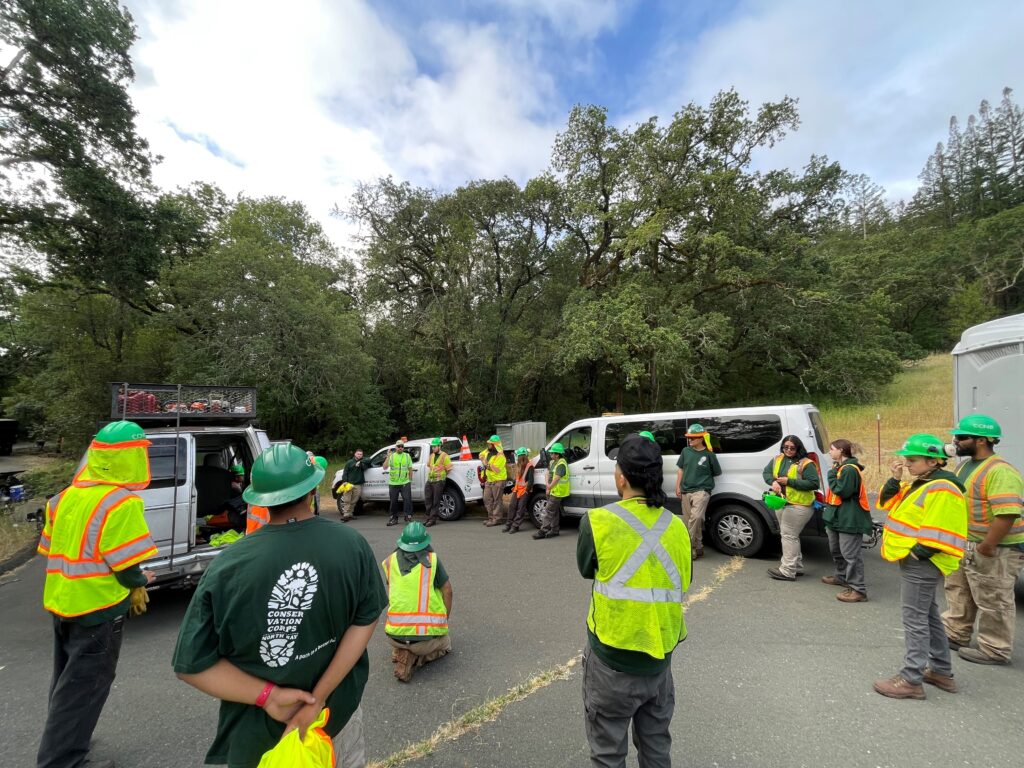
Even before the Department of Government Efficiency (DOGE) stepped in to freeze funding for agencies like the National Forest Service and National Parks Services, state and local governmental agencies and independent nonprofits were banding together to address this and other environmental concerns. In Northern California, the Conservation Corps North Bay has been collaborating with state and local agencies and community organizations since 1982 to reduce fire fuel on public and private land. CCNB also collects e-waste that might otherwise end up in landfills and restores natural habitats and miles of trails throughout Sonoma and Marin counties.
In the rural Santa Rosa community where Garric lives, CCNB cut down dead trees and removed brush on public and private land through a grant from the all-volunteer community organization Garric chairs, Upper Mark West Fire Safe Council, which was funded by the Sonoma County Vegetation Management Grant Program. For the past two years, CCNB has been clearing the only two major roads in the area that are accessible to residents fleeing a fire and firefighters combating one.
Conservation Corps North Bay’s Dual Mission
The Conservation Corps North Bay, a Make It Better Foundation grant partner, is not only closing a gap in serving communities through environmental stewardship; the organization is providing career and educational opportunities to young people who may have experienced barriers to success. Anyone between the ages of 18 and 25 can apply to become a corps member. In addition to earning competitive wages while gaining on-the-job experience, corps members who have not graduated from high school earn a GED by attending classes at John Muir Charter School.
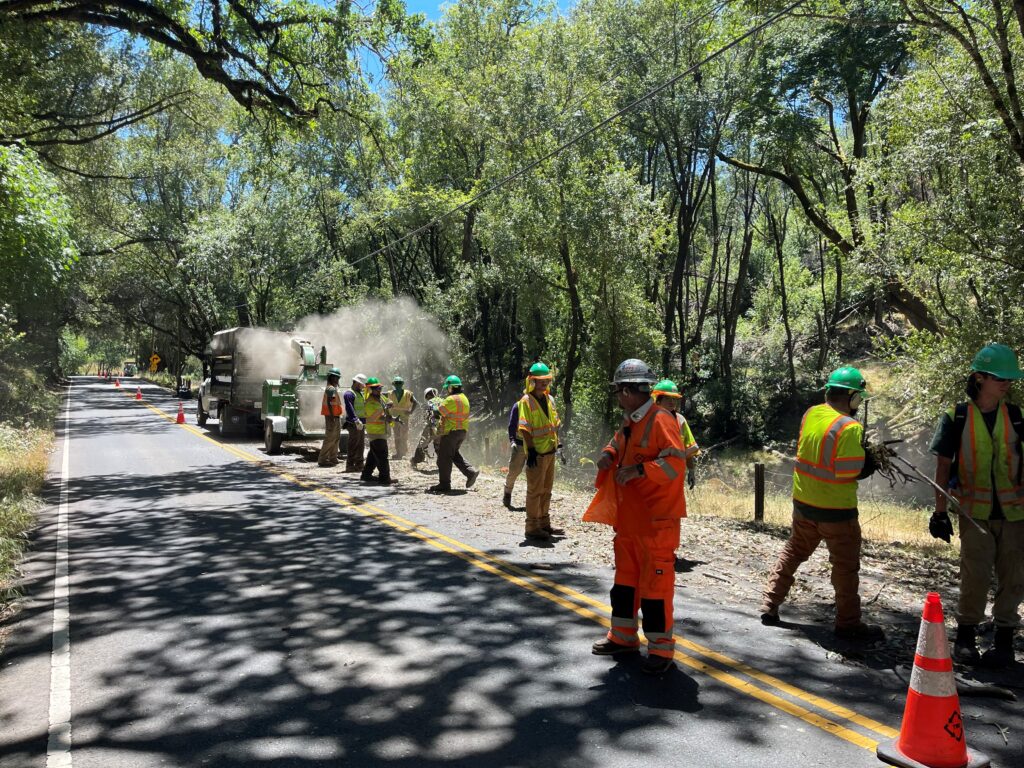
“CCNB is at the intersection of environmental stewardship, community development, and economic mobility,” says Chief Program Officer Tyler Pitts. “The 3 pillars of our program are work experience on either natural resources or recycling crews, education, including vocational education, and supportive services from staff members who work closely with each corps member to identify their career goals and the barriers they’re facing as they chart a pathway forward.”
Omar Bueno-Arroyo became a CCNB corps member in 2020 at the age of 20. After struggling to attend high school on a regular basis, he dropped out. “Another member suggested I join the Conservation Corps to gain work experience while continuing my education and finishing my diploma,” says Bueno-Arroyo. “This was the only place that offered schooling and full-time work.”
Bueno-Arroyo fulfilled his one-year commitment to CCNB and graduated from the John Muir Charter School site in Sonoma County. He now works as a crew supervisor in the CCNB Fire Foundry program. “We do a lot of fuel management and vegetation removal. We also get mentorship from the local fire departments with hands-on and face-to-face interactions with captains and chiefs in Marin County.”
“We care very deeply about these individual outcomes and the people moving into jobs and launching successful careers through our program,” says Pitts. “The experiences and skills they gain while they’re here really prepare them well to not just enter those careers, but to advance through them.“
Bueno-Arroyo plans to become a firefighter/paramedic. “Hopefully, next year, I can apply for a seasonal position and then the Academy and start heading down my career path pretty soon.”
A National Effort with Local Impact
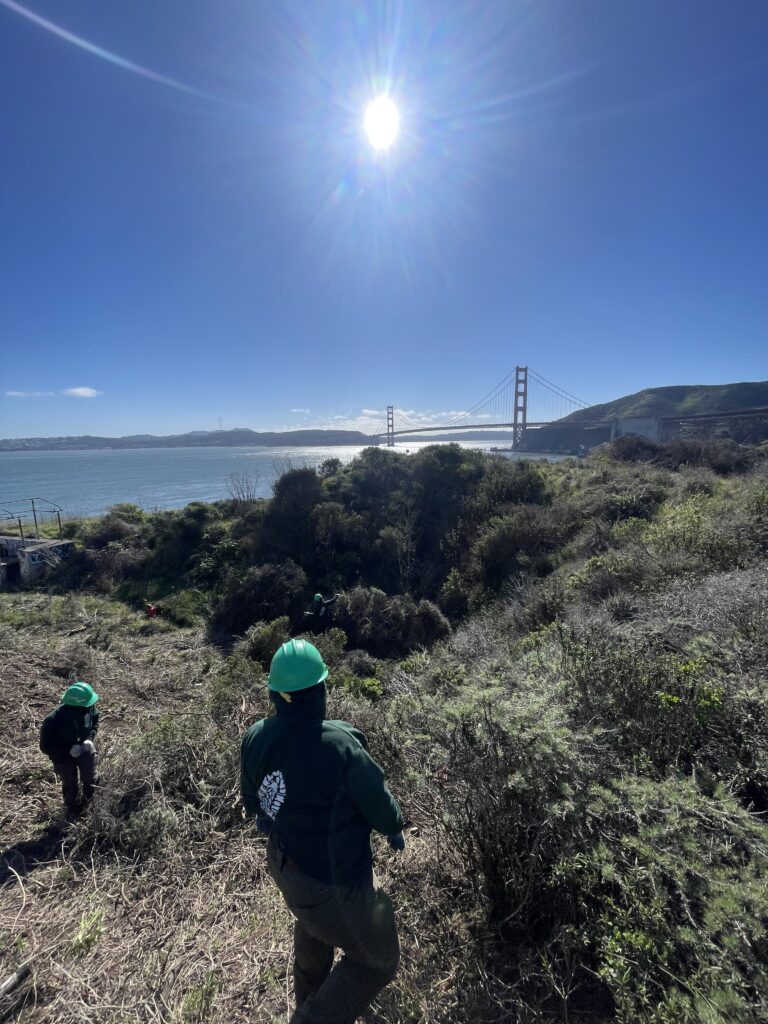
CCNB is one of more than 150 organizations across the country that are part of The Corps Network, a national network of conservation corps organizations across the country that are playing a vital role in environmental stewardship and youth workforce development. From the Montana Conservation Corps clearing trails in Glacier National Park to the Student Conservation Association’s Urban Green Program in Chicago, where participants plant trees, build trails, and help support a more sustainable urban environment, these organizations and initiatives are tackling environmental challenges while equipping young adults with skills, leadership experience, and pathways to long-term green jobs.
As climate change continues to impact communities nationwide, these programs have never been more critical. Explore conservation corps organizations and programs in your area by searching the Corps Network’s national database.
How to Help
Conservation Corps North Bay is a nonprofit youth conservation corps that has served Marin and Sonoma Counties since 1982. CCNB has helped thousands of young people achieve their goals through education and job skills while serving the environment and community.
Donations provide paid job training, career coaching, and educational support while participants work on projects that preserve and protect the environment.

- ‘One Image Can Change the World’: How Ami Vitale Uses Her Camera to Confront Extinction and the Climate Crisis
- Photographer Cristina Mittermeier’s ‘HOPE’ Confronts the Climate Crisis with a Powerful Visual Call to Action
- National Geographic Photo Ark: Joel Sartore’s Urgent Mission to Document and Protect Earth’s Vanishing Species
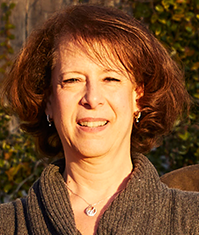
Susan Solomon Yem is an internationally published writer who likes telling other people’s stories. She enjoys writing about parenting, education, and how individuals achieve greatness in their chosen endeavors.
